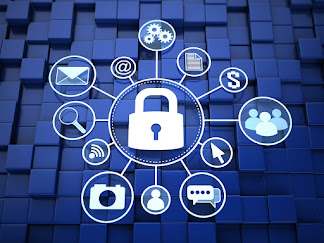WHY WE NEED ANTIVIRUS SOFTWARE?
"Is it really necessary to possess an antivirus installed on my devices?" Giving an affirmative or negative answer to the present question, which is usually heard in several environments, from the foremost technical and specialist to finish users without much knowledge of technology, never takes a short time. It usually generates long discussions about the performance of the team, the usability of the safety solutions, the privacy of the user and variety of other topics that often extend the conversation. I am going to list few facts that will help you form an idea about what to do:
1. Diversity of threatsToday there are many sorts of
threats that we discover spreading and affecting users. Although the term
"antivirus"
was coined within the collective subconscious, this sort of tools have evolved
from detecting only computer viruses to becoming complete security solutions,
which give many other functionalities like firewall,
antispam and anti-phishing filters or scanning of memory, among others, that
provide comprehensive protection to the system and permit you to navigate
safely in the current context of threats.
2. Variety in the way of spreading
Undoubtedly, the use of Social
Engineering is one of the main mechanisms used by attackers to spread their
threats and many times user interaction is needed to run a file, open a
document or download something on their mobile device. From there, the
infection begins.
However, it's not the sole thing
that attackers use, as there are techniques that don't require a user to
interact with the threat so as for it to be installed. For example, injecting
an iframe into a vulnerable website can lead an attacker to put in something on
the user's device without the user being conscious of what's happening. But a
security solution will detect this malicious behavior.
3. Vulnerable technologies accommodate different threats
Computer threats not only cash in
of flaws and vulnerabilities especially versions of an OS, but also in
applications, which opens the likelihood of an infection no matter the version
of the operating system used. In addition, to the above is added the variety of
languages used by attackers, which extend their possibilities of affecting
systems: from compiled languages to scripting they are used to attack various
platforms.
4. Affected platforms
Without a doubt, most malicious
code is concentrated on affecting Windows operating systems, but it's becoming
increasingly common to seek out threats to other systems like Mac OS X or Linux,
despite the very fact that a lot of still believe their invulnerability. There
is even malware for mobile systems like Android or iOS, so it is time to know
that there are not any risk-free platforms.
5. Concentration of threats
It is a reality that a security
solution won't stop all the attacks that a user could also be a victim of, but
it'll serve to stop infection in the vast majority of cases. Considering the
expansion within the amount of malicious code circulating, it's important to
not leave protection to chance.
6. Use of the device
The use that's given to the
device is important to stop infection. When it's shared, the probabilities of
being a victim of a cybercriminal increase; for instance , have you ever
considered what your son, cousin, uncle or girlfriend can download when you
lend him your equipment in order that he are often distracted for a while?
Beyond the discussion about who
you ought to or shouldn't lend your phone to, someone who gains control for a
flash could execute something malicious by mistake or ignorance. And if we
mention strangers, the likelihood increases and includes the potential
intention to try to harm.
It is true that having a security solution isn't enough. Ensuring that we are getting to be safe goes beyond just having an antivirus installed: knowing the threats and the way they spread, additionally to creating adequate use of technology, mainly keeping operating systems and applications updated , help to possess real protection against all types of threats.




Comments
Post a Comment